ON CELEBRATING COFFEE, INSPIRED BLENDS
WITH TIERED NOTES SUGGESTING DARK CHOCOLATE,
BROWN SUGAR, AND OTHER LEMONY THINGS
I have tasted the finest coffees in the world.
I have brewed small batch roasts from Andean Mountains,
and purchased the once-yearly blends
of the big players, scouring mountainsides
in ATVs for prized shade-grown cherries.
Blends that rise to the occasion.
Deeply layered, honoring
heritage and future,
believing, too, while sipping, that these are fair trade
beans.
I have trained my palette.
I have friends.
One of them, an immigrant woman
from a world heritage site in Michoacán,
brings me coffee in a brown paper bag.
Inside is a 2-liter plastic jar
with a red lid reading Folgers.
This is not instant coffee, friends.
Not Folgers either.
Nothing instant about it.
These are beans from the barrio,
desde las casas de cartón
between railroad tracks
donde los marginados viven,
given to me by my friend.
These are beans of the thirsty.
Do you know the song?
Casas de Cartón? Latin Americans
know it like they know the Beattles.
Anyway, my daughters, who are teachers,
have taught the
woman’s children.
In my glory days I didn’t pay too much attention.
One day the father of the children,
who is from El Salvador, is stopped
by the police while taking his kids to school.
They take him from the car, jail him
before he is deported. His daughter
tells this to my daughter.
This is a kindergarten story.
I don’t know how the kids got to school that day.
The girl is an honor student in high school now.
I’ve taken her brother to the top of the mountain on
skis,
and visited their father in San Salvador.
He’s there now.
We’re friends on Facebook.
Passing through the living room last night
I hear on the evening news that the drone program
at the border costs 500 million dollars a year,
that the cost of apprehending each campesino
is somewhere around 30,000 dollars.
I am washing dishes as I listen, preparing
to return the bowl to my friend,
the mother of the children. She has made some posolé for
us,
complete with radishes, shredded cabbage and lime.
This is about coffee, though. I get ahead of myself.
My friend shows me how to brew this coffee
in our kitchen. Much like camp coffee,
boiling water in a kettle, spooning it into the full boil,
dropping the egg shell to settle the grounds.
Remember the unknown fire, though, the mysterious process
with beans nobody can sell. Remember, too,
the trained palette, and the aroma of coffee
brewing in the kitchen. Grand children
know the smell of coffee brewing,
even if they’ve never picked the sweet cherries
on the hillside until they have diarrhea.
This is coffee from the margins.
This is coffee that doesn’t sweeten the room.
This coffee keeps you awake at night.
It’s a bitter drink, friends. It leaves residue in your
mouth.
Jim Bodeen
December 25, 2014—7 January 2015
RIDING WITH THE COFFEE MAN
—para
Arnoldo Paz
I. Going In
When the road disintegrates
For the van as the degree of incline increases,
The delegation carrying shoes
For the rural mountain school
Pile into the back end of a pickup
And a 4x4. Except for cushioned seats
Of the 4x4, I choose by chance
Who I’m riding with.
He’s the coffee man,
Copaneco, I was one of
these kids
You’ll put shoes on.
I taste coffee all day
long.
I went to high school
in Texas
And learned English.
But all I do is taste
coffee.
“We have 100 police here.
You can’t solve anything with that.
We’re living under the law of
Don’t get caught.
“We’re getting all shade grown coffee now.
We’re teaching people not to use wood,
Not to cut the bosque, the forests, to cook
And heat. We’re trying to show them another way.
I ask them, Do you
wonder why you’re running
Out of water in
March?”
Arnoldo Paz pulls his SUV around
the last
Rain-washed corner in the red dirt road
Too high and rough for any but the toughest cars.
We’re looking at the kids getting shoes.
Here they are in blue jeans and any manner of
short-sleeved white shirt that will qualify
as a uniform. Shoes are from churches
and camps in the States given to Rotarians
for distribution in two country schools.
“The kids getting shoes all go to school.
Those two kids outside the fence with their mother,
They’re not going to school. They say
Next year they’re going to go to school
And get some shoes.”
As kids line up outside, the distribution plan
Gets explained inside.
We don’t let them choose. How do we fit them?
Hold the shoe to the foot.
They’ll tell us if they’re too tight or too big.
One room with two-seat wood desks on runners.
The shoes look good. They light up,
Make promises to fly.
Fruit of the Loom socks, 3 girls with make-up
And hair-dos on the heel, a soccer shoe with lights,
Cushioned soles, air in the heel, Nike Swoosh.
Reeboks. Set up stations.
Each kid gets shoes, two pair of socks,
Shorts or panties. Teenage Mutant Ninja Turtles.
Hello Kitty. Brats. Four black stripes.
Take your old shoe off when you come in.
Give it to Jack or Sean. They’ll get you
The right fit. Four operating stations.
40 children plus.
This is Escuela FHIS II, 1994-1998,
Formando ciudadanos para engrandecer a Honduras .
Forming citizens to make a greater nation.
On the walls: Espaciio de estudios, Sistema Óseao,
Aparato Digestivo, Lagos
del Istma.
Escuela Tuburcio Carias Andino.
He was a dictator, one of the helpers says.
These are some
slip-ons. Give me your foot.
I leave the children to sit with Arnoldo.
“This is a special place for coffee.
Red dirt for coffee. Acid.
See that forest?
Conifers, soil acidity. Ph.
The only problem is water.
It doesn’t stay in the same place
At the same time.
“We’re at 1300 meters here.
Hot days and cool nights.
Like apples and grapes where you come from.
Coffee needs six hours of sun
For the type of acidity you enjoy for your roasts.
Coffee’s like wine. Different acidity. Different flavors.
Here we get citric or orange, usually
From the forest. All Arabica Caturra varieties.
Perdido los burbonos, No?
Burbonos needs too many people.
“Fair Trade? It’s a type of seal, that’s all.
I want to make it more fair than that
For the fathers and mothers of these children.
Probably fair is not even the right word.
Utzkapeh is the Mayan word for good coffee.
We are exporting 65,000 bags.
“We’re doing the right thing environmentally.
Social, water, land, people.
I used to be one of these kids here.
I had shoes though.
“We have been a volume camp here for so long.
We have a coffee competition 28 March.
We’re going to be a quality camp.
Our First Lady’s coming.
We’re going to pick the best ten coffees.
Drink, spit, take water.
Keep the palette fresh.
“We’re starting to get chocolate flavors in Copán.
Here in Copán there’s a sweetness, an aftertaste.
In my neighbor’s fields we found a strawberry chocolate.
The gentleman’s name is Manchame.
“My biggest joy is in opening up possibilities
In the people and in the qualities of coffee
At the same time. I’m trying to show them
How not to damage the coffee in the process
All the way from picking red cherries,
Through fermentation and staying clear of mold.
Not picking the green ones.
“We’re making changes.
Small ones. Firm ones.
Finding people that want to be trained.
Trained to stay, too. Spreading the word.
Keys to good customers.
Send a bag of coffee with a story.
The coffee comes from a forest and a family.”
The children walk out in new shoes.
I ask them about their teacher.
She has good energy they say. Buen energía.
She’s funny, in good health,
Ganas para nosotros aprender.
She wants them to learn.
I look at their shoes and then in their eyes.
Sus ojos son más importante qué sus zapatos.
Qué tiene a dentro es más importante qué sus ropas a fuera.
Your eyes are more important than your shoes.
What you have inside is more important than your clothes.
Let’s see you run. I can’t help myself either way.
Watching them compare shoes is too much.
Estos están tan apretados.
These are too tight.
Let’s see you run now. Wow.
“Coffee itself is social,”
Arnoldo says.
“500,000 coffee workers in Honduras .
300,000 hectares in coffee.
120,000 growers.
Average size is from 5 hectares.
“Parents don’t have farms, but have plants.
How many of your parents have coffee plants?
They have three, four, five plants.
They’ll sell to intermediaries. These guys
Come up in trucks and say,
I’ll give you 50 Limpiras for that bag of coffee.
They should be getting 200 Limpiras.
They don’t have a truck to Copán.
I want them to know the price.
Do I sound a little Revolutionary?
Instead of ten bags, they’ll have 500 bags.
They can show some power and bargain.
Sometimes the doors are closed
Because they’re fun to open.”
II. Shoes at the Second
School
A covered open air room with
desks
And no walls where children sit waiting.
A garden immediately behind them.
Rabanos. Mostaza. Culantrillo.
Their class President, Jeremias Antonio Cruz,
12 years old, in 4th grade, tells me of his
school.
María Magdalena Aquino is the school.
Marubeni Morales Manchame is their teacher.
I’m behind on my learning.
I’ve been with Arnold Paz.
Donna gets me up to speed.
Her heart’s been ripped by this experience.
She’s in an altered state of grace.
The others are, too, But I’m next to Donna.
Sean cuts the plastic ties with his jack knife.
Putting a pair of socks on bare
skin
That’s never felt cotton this soft
Catches me off balance.
I look away one time and reach for the shoes.
Saúl walks among the children
Secretly preparing them to sing.
They’ll sing the Honduran Anthem for us at the end.
Their eyes are more beautiful than the shoes.
“Coffee is good with the
environment
Because it lives with other
plants,”
He gives me his phone number and email.
“Email me,” he says. “I keep losing the phones.”
Jim Bodeen
In the mountain schools in Copán
March 3, 2007
RIO AMARILLO
AND THE COFFEE PLANTATIONS
For Saúl Molina
The man walks with a macaw feather in his staff
As part of his uniform. Colors change from blue to gold
On a single feather pointing to an older story.
Tropical rain forests call caciques to build even larger
plantations.
Maybe it was the beauty of these mountains
That led to the calendar itself. And maybe the calendar
Became more important than the mountains and rivers.
God only knows, and God’s not talking.
How the people forgot their collective memory
Interests me more than any calendar.
The Copán
River
Santa Rica’s kind of like a sister town to Copán
With 4000 people who don’t have a plan.
Compra de café. Tomatoes and chiles for export
In Salvador or Guatemala .
These people used to raise tobacco.
This is the road to Guatemala . We’re 10 kilos
From the border.
I
know these things because
I’ve been listening to my guide from the North Coast
All the way into Copán where he lives.
I don’t belong to any club, nor do I wear a uniform.
I carry a notebook listening for words like ixoqui,
Mayan word for woman. A word given to me
Simply for paying attention.
Lo que es verdad. Lo que es paja.
And the ability to know the difference.
Whatever happened, collective amnesia dogs us all.
My country’s collective memory’s gone
The way of frozen computers.
The world descends on Copán in a vast pilgrimage.
The guide broken open by song. He belongs
To an earlier past, not the one he was born to.
A single feather sings his name.
Jim Bodeen
March 16, 2007



















































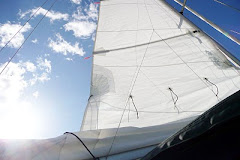

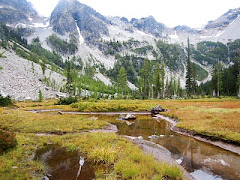


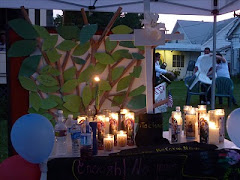






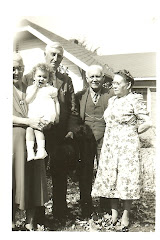
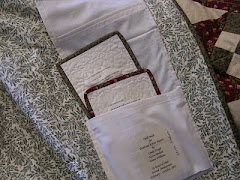








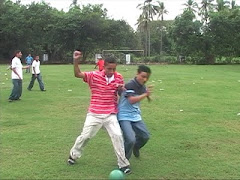
No comments:
Post a Comment